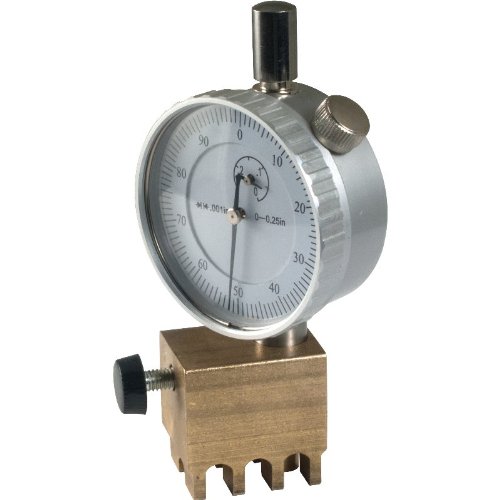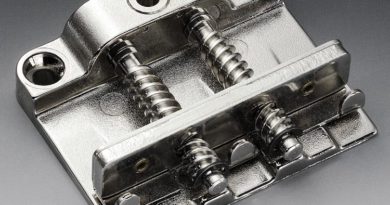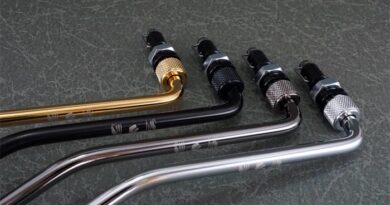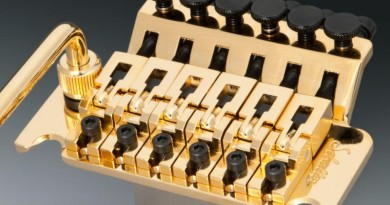Nut Slotting Gauge
If you are like I am and a real fanatic about pursuing the best possible setups, I think you willll really appreciate a Nut Slotting Gauge. Now, all my guitars have locking nuts, and that’s still alright for this nifty tool. Let’s see why!
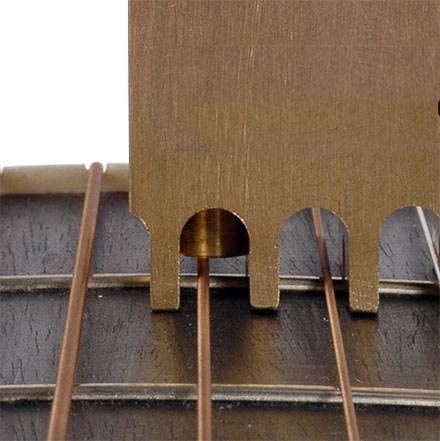
The ideal usage for the gauge is measure the string clearance at the first fret. Maybe “Nut Slotting Gauge” just sounds cooler than “First Fret Clearance Gauge”. haha! Just place the plunger over the string at the first fret (for me and my locking nuts, that’s pretty much either E string). The other arches you see in the photo are for it to straddle the other strings – if you play bass, there is also one spaced to handle bass guitars.
The face of the gauge is made to spin to adjust the setting to zero – there are also digital options out there (see below). Once at zero, push down the string and get your reading. Then work your way across each string. Incidentally, methods of pushing down the string include literally pushing down the string on both sides of the base or pushing down the plunger from the top. I like holding down the string with my fingers. Decide what works best for you.
Demo
The readings are in .001″. That’s thousandths of an inch. Yeah, I have feeler gauges and I do the eyeball method. But how accurate are those options when you can get it to the specificity of .001′? Wow! Just put this tool into action over a few days and you will find what you ‘think’ are solid being out of your preference.
Preferred Range?
Well, that’s up to you. Generally speaking, .020″ is about a medium range. I try to keep mine at around .010″, with .015″ being the max. Find what is best for you and adjust accordingly. You can lower an open nut with nut files. Locking nuts use methods that include lowering the nut shelf or filing down the bottom/underside of the nut. Find what’s best for you. If you aren’t sure, definitely take it to a qualified repair shop. Knowing these numbers means you can be specific with the repair shop, which they should appreciate.
Other Uses
You can also use it for checking string height up and down the neck, That can be handy if you have one guitar that plays like a dream and you want some reference points to apply to your other guitars.
Another application is fret maintenance? Let’s say you need a fret level and polish. After leveling the frets, how do you ensure the fret height is the same from Low-E to High-E and all points in between? That’s right! Put the nut slotting gauge to work as a fret-height-gauge!
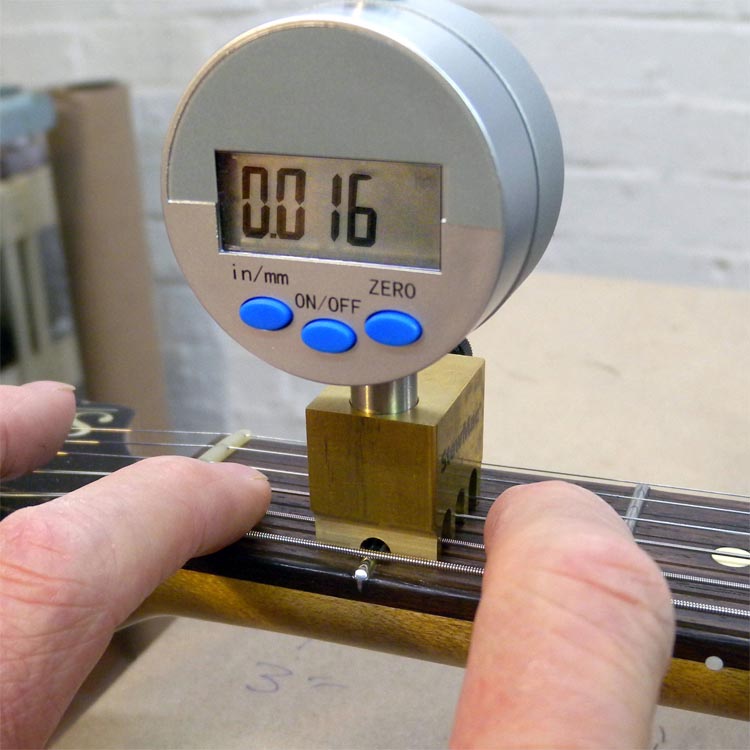
“Why does someone need this?”
I can feel ya. Getting that most ideal string clearance at the first fret can play a part in your action going down the fretboard and an even bigger part in how well your intonation applies while playing. Too low could contribute to string buzz. Too high and fretted notes can go sharp.
“Why all the measuring?”
I can feel ya on that, as well. I’ve been in guitar-making shops and laid hands on different schools of thought. One being to go by feel. Another being to measure, and measure, and then measure again. I can think of at least 5 customers of a “feel” builder that experienced quality issues that can totally been avoided by proper applications of measuring tools. I think this also applies to the ongoing maintenance of a guitar.
You can find them by entering something like “nut slotting gauge” in your favorite search engine. There are also a few Amazon links below. Yes, it costs a few bucks. But once you are on the other end of your first setup with this bad body, you will know it’s totally worth it!
7 string 16Ω 59 Airbucker Alnico 2 Alnico 4 Alnico 5 Alnico 8 Bare Knuckle BKP Boot Camp Brown Sound Celestion Ceramic Custom Shop David Shepherd DiMarzio Dual Resonance EVH Fishman Floyd Rose Fluence Gibson HSP90 Humbucker Ibanez JB Jimmy Page John Petrucci Les Paul MJ Mojotone P90 PAF Pariah Pickup Satch Seymour Duncan Singlecoil Single Width Speaker Steve Vai Tech Tip Tremolo Virtual Vintage

